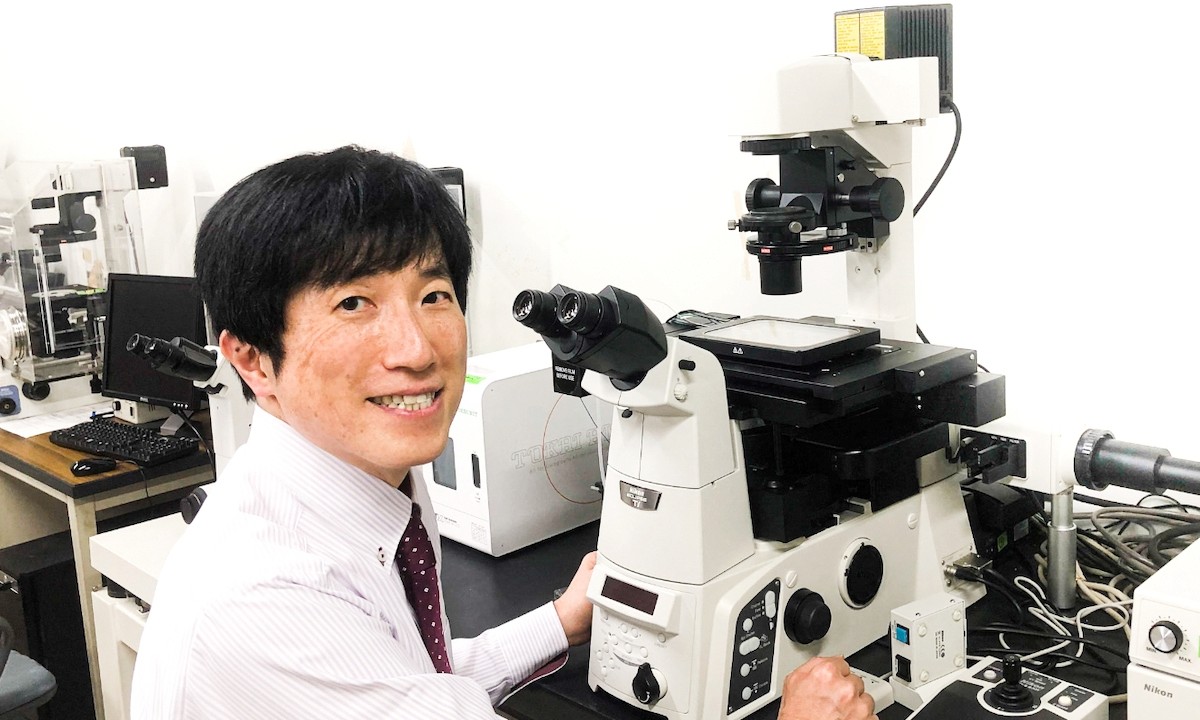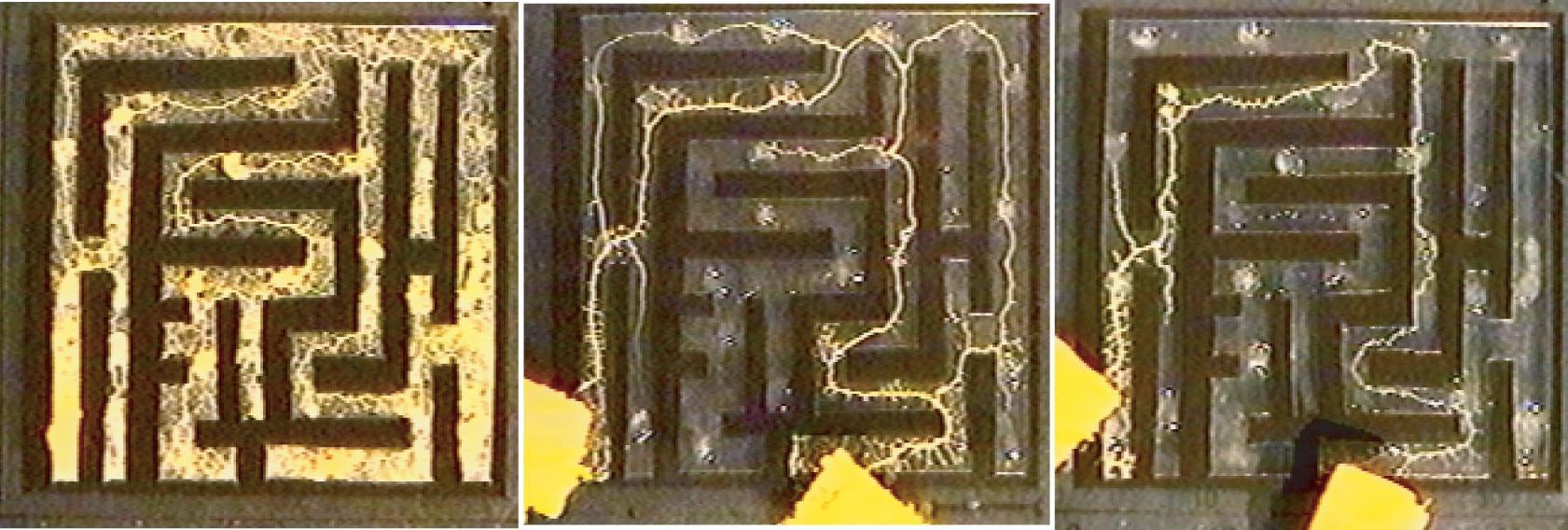NEWS
08.11.2024
Only Saiyans Could Exterminate Them! Why One Cellular Biologist Theorizes Majin Buu Could Be a Slime Mold!

Majin Buu was revived by the wizard Babidi to help him enact his revenge and take over the universe. Buu is a formidable opponent for Goku and his pals, not only because he can absorb anything into his body, but he can also copy his opponents' skills in an instant and transform into a ton of different forms!
What would an expert make of Majin Buu, a lifeform beyond human understanding? We asked cellular biologist and professor at Hokkaido University Dr. Hisashi Haga for his take on a tragically underdiscussed topic in the sciences: the biology behind Majin Buu!
Profiles
Interviewee: Professor Hisashi Haga
Professor at Hokkaido University's Faculty of Advanced Life Science. He specializes in cellular biology, tumor biology, biophysics, and regenerative medicine. His research covers a wide range of topics, including epithelial cell population migration, collective cancer cell invasion, the malignant transformation of cancer cells induced by substrate stiffness, and neural differentiation of embryonic stem cells.

Interviewer: Maishilo
Entertainment analyst. Author of many articles based on serious research (including data analysis and interviews) into non-serious subjects. Articles often featured on Yahoo's freelance page and the Daily Portal Z website. Has a particular fondness for music, films, and manga! Twitter: @_maishilo_
Contents
・ He Can Split Himself Up and Regenerate. Is Buu a Slime Mold?!・ Buu-like Things Live Inside Our Bodies
・ Could Scientific Advances Make Us Into Buu?
—Buu has abilities that humans couldn't even dream of, like regeneration and splitting himself up. Is there a living creature comparable to Buu?

Professor Haga (hereafter, Haga): There are several different options to consider, but I think the most interesting one would be if he were akin to something in the slime mold family*.
*Slime molds, also known as "myxogastrids" or "myxomycetes", are single-celled organisms that live on rotting wood and soil.
—Buu could be a member of the slime mold family?!
Haga: Buu can divide himself into tiny pieces and come together to make a large Buu. This is identical to cellular slime molds. Cellular slime molds are microscopic creatures, each one roughly one-tenth the width of a human hair in size. Normally, each cell moves independently in order to catch food.

Bacterial Predation and Division
Bacterial Predation and Division: Created by Dr. Kei Inoue
Source: Japanese Society for the Study of Cellular Slime Molds Official YouTube Channel (dicty.jp Society for the Study of Cellular Slime Molds – YouTube)

Starvation Aggregation of the Cellular Slime Mold Polysphondylium filamentosum
Starvation Aggregation of the Cellular Slime Mold Polysphondylium filamentosum: Created by Dr. Hidenori Hashimura
Source: Japanese Society for the Study of Cellular Slime Molds Official YouTube Channel (dicty.jp Society for the Study of Cellular Slime Molds – YouTube)
However, when food runs out, cellular slime molds group together in communities of up to hundreds of thousands and transform into larger slug-like creatures.
They then migrate in this manner in search of food, creating spores and spreading them across new areas. In the sense that they are a bunch of single cells that come together to create a large aggregate, you could say that slime molds and Buu are similar.
--So, there are creatures like Buu on Earth!
Haga: That's right! In addition, slime molds possess intelligence. In fact, there is a different kind of slime mold called a "true slime mold " that appears to be quite intelligent.

Left: True slime molds spreading around a maze.
Middle: When food is placed at the maze's entrance and exit, the true slime molds create a path, connecting the food.
Right: In the end, the true slime molds take only the shortest path between the entrance and exit.
Provided by Professor Toshiyuki Nakagaki, the Research Institute for Electronic Science, Hokkaido University
My Hokkaido University colleague, Professor Toshiyuki Nakagaki, had true slime mold solve a maze. The results showed that the true slime mold gathered along the shortest route in search of food. People often think that creatures like slime molds don't possess any sort of intelligence, but it may just be the case that humans simply haven't discovered all the things they're thinking about.
With all that in mind, Majin Buu might be a highly intelligent slime mold!
—Interesting! I've never heard anything like that about Dragon Ball before! In Dragon Ball, Buu is also one of the most powerful enemies. How about slime molds? How would you rate their Power Level?
Haga: Slime molds don't really attack humans—or Saiyans for that matter—so it's hard to compare their fighting abilities... But, if slime molds were to gain aggressive tendencies, it could become quite the problem. Slime molds are everywhere, and it would be extremely difficult to get rid of them. I think attempting to eradicate them would only really be possible for a Saiyan.
However, slime molds on Earth at least have one crucial weakness: They move so slowly they appear to be stationary.
—As weaknesses go, that one's fatal!
Haga: That's why I wouldn't worry too much about slime molds. If you were to meet a particularly aggressive slime mold, you could just wash it off and then run away.
—I'm glad to hear that even normal humans could fight them off!
—Majin Buu also has the ability to absorb and then transform into other creatures. Are there any creatures on Earth with similar abilities?

Haga: I'd say macrophages and neutrophils.
—What are those?
Haga: They are types of white blood cells. They patrol the body, and once they find an enemy they pursue it relentlessly.
—That's a lot of chasing!
Haga: When macrophages corner an enemy, they absorb it, and then secrete it out from their body, changing their own appearance in the process. Once that is done, they go to stronger immune cells** waiting elsewhere and report what kind of enemy they've found. The cells that receive this report then go into action.
Going back to Buu, when he absorbs his enemies, his appearance and clothes change. When I saw that, it really reminded me of macrophages.
**Cells that protect the body from viruses and pathogens.

—Buu powers up when he absorbs enemies, but what about macrophages?
Haga: In the case of macrophages, they just die.
—That's so sad...
Haga: If the enemy is small, macrophages return back to their original size, but if it's a powerful enemy, macrophages are done for the moment they absorb it. They then burst so they won't cause any other problems, and so that they can be easily eaten by other macrophages.
—Then, that's the complete opposite of Buu!
Haga: That's right. In terms of absorbing other things to power up, Buu might be a bit more like mitochondria than macrophages.
—What are mitochondria?
Haga: Mitochondria are tiny living things within our cells. Not only are we living things, but we also house other living things within our cells. Mitochondria can't survive on their own, so in the distant past, they did some fusion of their own and joined up with our cells. This not only allows mitochondria to survive, but also provides our cells with large amounts of energy.
Thinking in terms of what you were saying earlier, that Buu absorbs enemies to power up, the relationship between mitochondria and cells might be the most similar.
—I had no idea something like that lived inside our bodies! It's definitely interesting to think that a battle like the one Goku and his crew fought against Buu could be happening in my own body right now!
—So far, I've asked you a lot about Buu's biology, but what I really want to know is this: Why can't we transform or split ourselves up like Buu does?
Haga: That's because our cells differentiate. Humans have roughly 200 different types of cells. At first, they're all the same kind of cell, but they split up as they develop. This process is known as "differentiation". Once a cell has gone through this process, it can't become another cell.
For us to become like Buu, differentiated cells would have to be able to change into all sorts of different cells, and that would be pretty difficult for humans to do.
—If science continues to advance, do you think that there's a possibility we could become like Buu?
Haga: I think it's not impossible. Professor Shinya Yamanaka of Kyoto University's discovery of and research into induced pluripotent stem cells (iPS cells) is actually about this. According to his research, it may just be possible for differentiated cells to return to their previous state.
It might be difficult to transform as quickly as Buu, but if it were an extremely slow version of the Majin Buu transformation, I think humans could possibly be able to do it.
—This is making me realize yet again how cool science can be! Last but not least, could you share your own thoughts about Buu?
Haga: Buu has many different abilities; he can split himself up, regenerate, and more. But he has a unique trait we haven't mentioned yet, which is that he wants to destroy everything. In this sense, I think that Buu is the osteoclast of the universe.

—Osteoclast...?!
Haga: Osteoclasts are cells in the body that constantly break down bones. They're only really interested in breaking things down, so they'll dig into anything that they get their hands on. However, this is an extremely important function for the human body, since they break down old bones so that cells can make new ones. This cycle keeps our bones from falling apart.
To those living on Earth, Buu was the enemy because he came to destroy their planet. But, looking at the vast scale of the universe, perhaps there was something that made the destruction of Earth necessary.
It's definitely not great for us, but Majin Buu may have had his own role to play in the evolution of the universe. Reading Dragon Ball for the first time in a while gave me a new perspective I didn't have when I read it as a child. It was very interesting to think about!
—Professor Haga, I learned so many things that I never would have even thought of just by reading Dragon Ball myself! Thank you so much for your time today!
This site includes machine-translated texts. Please be aware that you might find some unusual expressions that are difficult to understand.
Post
Confirm Post
Post the above comment?
Reply
Confirm Reply
Post the above comment?
Are you sure you want to delete this comment?
Report successful
Post Unsuccessful
This user will be muted.
You will be unable to see comments from muted users in the comments area.
*To unmute users, navigate to the "Comments" area on MY PAGE.
Reply
Confirm Reply
Post the above comment?
Edit
Post


Post
Confirm Post
Post the above comment?
Edit
Post